
Published Oct 2024
Starting and running a social enterprise
The social enterprise journey can be both exciting and challenging. This section provides resources and tools to help you navigate the process of starting and running a successful social business. From understanding the problem you want to solve to measuring your impact and building a strong team, we cover the key areas that every social entrepreneur and practitioner needs to consider to turn intentions into impact.
Understanding problems
Before diving into solutions, it's crucial to have a deep understanding of the problem you're trying to solve. This section provides some resources that will help you explore the root causes of social and environmental issues, engage with affected communities, and identify pathways to create meaningful change.
Resources
.png?w=192)
'How to revive a neighborhood: with imagination, beauty and art', Theaster Gates
Theaster Gates, a potter by training and a social activist by calling, tells his story of transforming abandoned buildings to create community hubs that connect and inspire those who live there. A famously inspiring talk, it shows how problems can be reframed as opportunities, how to start with what you’ve got, how to make something out of nothing and how culture can be a catalyst for social transformation.
'How to revive a neighborhood: with imagination, beauty and art', Theaster Gates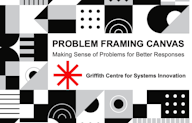
'Problem Framing Canvas Workbook', Griffith Centre for System Innovation
This handbook helps you answer, ‘what problem are we really trying to solve with our social enterprise or project?’ Understanding this helps to find better solutions. This canvas and supporting guide offer a selection of tools to help you frame problems, recognise different types of problems, and open up opportunities for action.
'Problem Framing Canvas Workbook', Griffith Centre for System Innovation.png?w=192)
'Where good ideas come from', Steven Johnson
Steven Johnson is an innovation thinker and writer. In this video, he outlines the main ideas from his book: 'Where do good ideas come from?' He shares recurring patterns he has noticed that are present in historical times of great creativity and innovation.
'Where good ideas come from', Steven Johnson.png?w=192)
'The DIY Toolkit', NESTA
NESTA is an independent charity based in the United Kingdom that works to increase innovation capacity in the UK. They have developed this toolkit to help people invent, adopt, or adapt ideas that can deliver impact. It features 30 practical social innovation tools that are quick to use and simple to apply.
'The DIY Toolkit', NESTA.png?w=192)
'The Field Guide to Human-Centred Design', IDEO
IDEO is a global design agency known for its human-centred approach. This Field Guide to Human-Centred Design represents how IDEO thinks about design for social impact. It includes 57 clear-to-use design methods for new and experienced practitioners, plus case studies.
'The Field Guide to Human-Centred Design', IDEO.png?w=192)
Impact Boom Blog and Podcast
Impact Boom has undertaken 100s of interviews with social entrepreneurs and change-makers from across Australia and around the world. Produced as podcasts and blogs, their platform provides an amazing range of impact insights and stories.
Impact Boom Blog and PodcastWant to browse more resources?
See all resourcesBuilding a social enterprise business model
A solid business model is the foundation of any successful social enterprise. Here, you'll find resources to help you develop and evolve a business model that balances impact goals with financial sustainability. The resources will cover topics like start-up thinking, value propositions, customer segments, and importance of partnerships.
Resources
-1.png?w=192)
'Business Model Canvas Explained', Strategyzer
A 2-minute introduction to the Business Model Canvas - a tool that helps people design and develop business models for new ventures. This method comes from Strategyzer's best selling management book Business Model Generation and has been used by entrepreneurs and enterprises around the world.
'Business Model Canvas Explained', Strategyzer.png?w=192)
'Using the Business Model Canvas for Social Enterprise Design', Ingrid Burkett
This booklet goes beyond the Business Model Canvas as a general tool. It outlines how Ingrid Burkett, an Australian social entrepreneur, applies the Canvas to the specific needs of social enterprise. The booklet walks you through how to use the Canvas step-by-step.
'Using the Business Model Canvas for Social Enterprise Design', Ingrid Burkett.png?w=192)
'Why the Lean Start-up Changes Everything', Steve Blank (Harvard Business Review, 2013)
This is a pivotal article by entrepreneur and educator Steve Blank, published in the Harvard Business Review in 2013. The article introduces the lean startup methodology, which emphasises rapid experimentation, customer feedback, and iterative product development.
'Why the Lean Start-up Changes Everything', Steve Blank (Harvard Business Review, 2013).png?w=192)
Social Startup Studio
Social Startup Studio is an initiative by Swinburne University of Technology in Melbourne, Australia. Its goal is to support and foster the development of social enterprises. The studio website offers a huge range of practical resources for social enterprise startups.
Social Startup Studio.png?w=192)
Social Shifters
Social Shifters is an international charity helping the next generation of young leaders, innovators, and entrepreneurs to tackle the world’s most pressing social and environmental issues in new ways. Their website offers e-learning, videos and downloadable digital tools to support social enterprise startups.
Social Shifters.png?w=192)
'The Social Entrepreneur's Playbook', MacMillan and Thompson (2013)
This is a paid resource. Written by Ian C. MacMillan and James D. Thompson and published in 2013 the book provides a step-by-step framework for launching and scaling a successful social enterprise, drawing on the authors' extensive experience in entrepreneurship and social innovation.
'The Social Entrepreneur's Playbook', MacMillan and Thompson (2013)
Nature positive business models
This online resource by Wedgetail brings together multiple examples of nature-positive business models being explored around the world.
Nature positive business models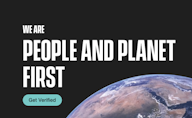
People and Planet First (PPF)
People and Planet First is a participatory verification and a global collective that’s helping accelerate the transition to an economy that puts people and the planet first.
People and Planet First (PPF)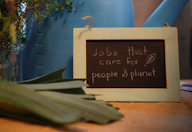
What is a social enterprise?
A social enterprise is a business that puts people and the planet first. They trade like any other business but exist specifically to make the world a better place.
What is a social enterprise?Want to browse more resources?
See all resourcesMeasuring and evaluating impact
Demonstrating your social impact is essential for attracting funders, customers, and supporters. Understanding your impact is essential for learning and improving your approach. In this section, you'll find resources that will help you measure and manage your impact, and also good practices for reporting and communicating with your stakeholders.
Resources

Seedkit
Seedkit is a nationwide project and platform that helps social enterprises measure and communicate their impact. Its self-managed reporting platform allows social enterprises to measure, track, and communicate operations and impacts via customised dashboards and reports.
Seedkit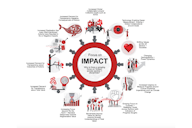
'Now we are all measuring impact', Griffith Centre for Systems Innovation
A rich introduction to the history of measurement and how different drivers have informed how we think about, and practice, impact measurement and evaluation today. Also includes some useful graphics that help distinguish different terms and approaches from each other.
'Now we are all measuring impact', Griffith Centre for Systems Innovation.png?w=192)
‘Expanding Concepts of Scale’, Gord Tulloch
‘Can you scale your social enterprise?’ is a question often heard. This blog by Gord Tulloch challenges a narrow view of ‘scale’, which usually refers to volume and growth. Tulloch suggests there are five pathways to achieving ‘scale’ or impact, including increasing numbers, changing the rules, changing beliefs, changing norms, and changing the conditions that enable agency and distributed action.
‘Expanding Concepts of Scale’, Gord Tulloch.png?w=192)
Introduction to Theory of Change from NESTA's DIY Toolkit
A Theory of Change articulates the link between intentions, activities, outputs, and outcomes. It presents a hypothesis of how we think we can create change in the world. This short video uses an example to explain how to use the tool to define goals and the pathways to reach them.
Introduction to Theory of Change from NESTA's DIY Toolkit.png?w=192)
Theory of Change: Framework for Social Impact from SoPact
This video offers an alternative framework for creating a Theory of Change. It’s led by Chris Gaines from SoPact, a US-based social enterprise.
Theory of Change: Framework for Social Impact from SoPact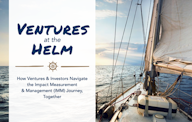
'Ventures at the Helm', Budzyna et al.
This report provides an excellent guide to developing impact measurement and management strategies. Critically, it advocates for enterprises adopting different strategies depending on their stage of development versus a one-size-fits-all approach.
'Ventures at the Helm', Budzyna et al..png?w=192)
Common Approach to Impact Measurement
The Common Foundations from Canada provide easy-to-understand general guidance on measuring impact. The report focuses on five essential practices that comprise a minimum standard of impact measurement.
Common Approach to Impact Measurement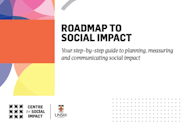
Roadmap to Social Impact - CSI
This thorough resource from Centre for Social Impact is a step by step guide to support you and your organisation through the process of outcomes measurement and evaluation.
Roadmap to Social Impact - CSIWant to browse more resources?
See all resourcesAccessing appropriate funding and finance
Securing 'the right' funding is a common challenge for social enterprises. This section will guide you through the different types of capital available, including grants, loans, equity investment, and crowdfunding. You'll also learn what's required to develop an investment case and build relationships with impact investors.
Resources
.png?w=192)
Prepare for funding, SEFA
Created by SEFA, this guide outlines four key areas—Purpose, Plan, Profit, and Prudence—for social enterprises to focus on when preparing for funding.
Prepare for funding, SEFA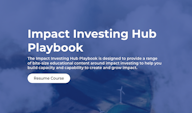
'Impact Investment Playbook', Impact Investing Hub
The free, self-directed Impact Investing Hub Playbook supports Australia’s impact investing ecosystem, offering modular content on Impact Investing, Impact Measurement, and Revenue Diversification, tailored for investors, advisors, and organisations seeking investment.
'Impact Investment Playbook', Impact Investing Hub.png?w=192)
The Funding Centre
The Funding Centre is a portal providing information on grants and fundraising in Australia. It is an initiative of Our Community, a social enterprise that provides advice, tools and training for Australia’s community sector, as well as services for business and government.
The Funding Centre.png?w=192)
Social Investment Explained, Big Lottery Fund
"Social Investment Explained" was produced by the Big Lottery Fund and Social Enterprise UK. It aims to help community and social enterprises understand investment options and readiness requirements. While it’s UK-based it offers good questions for consideration for Australian organisations too.
Social Investment Explained, Big Lottery Fund.png?w=192)
'Social Investment Manual: An Introduction for Social Entrepreneurs', Schwab Foundation for Social Entrepreneurship
This manual offers social entrepreneurs a practical guide to building relationships with social investors, covering the investment landscape, strategies for finding and approaching investors, and best practices for due diligence and negotiating lasting partnerships.
'Social Investment Manual: An Introduction for Social Entrepreneurs', Schwab Foundation for Social Entrepreneurship.png?w=192)
Raise Finance, BCCM
This guide offers essential insights into how social enterprises can expand funding beyond grants and donations by involving their community and members. This guide focusses on how you can achieve this by using a co-operative structure for your social enterprise.
Raise Finance, BCCM.png?w=192)
The Community Investment Handbook
The Community Investment Handbook is a guide for communities and practitioners on establishing cooperatives to meet local needs, raise funds, and build circular economies within the framework of national legislation.
The Community Investment HandbookWant to browse more resources?
See all resourcesLegal and governance
Navigating the legal and governance landscape is crucial for the long-term stability and success of any social enterprise. Here, you'll find resources on choosing the right legal structure for your venture, whether it's a non-profit, cooperative, or a company. We'll also cover topics like board governance, intellectual property, and risk management.
Resources
-1.png?w=192)
Financial management and governance - resource centre, Institute of Community Directors Australia (ICDA)
ICDA supports community sector governance with training, accredited courses, tech tools, free resources, and financial guides for not-for-profits and social enterprises.
Financial management and governance - resource centre, Institute of Community Directors Australia (ICDA).png?w=192)
Financial management and governance guide for NFP organisations, CPA Australia
CPA Australia’s guide aids not-for-profits, including social enterprises, in finance management, governance, risk, compliance, and tax—vital for sustainable operations.
Financial management and governance guide for NFP organisations, CPA Australia.png?w=192)
‘Social enterprise guide: Legal issues to consider when setting up a social enterprise’, Justice Connect
Justice Connect’s guide helps social enterprises with legal needs, covering structures, governance, setup, compliance, and operational issues for all stages.
‘Social enterprise guide: Legal issues to consider when setting up a social enterprise’, Justice Connect.png?w=192)
‘Indigenous Governance Toolkit’, The Australia Indigenous Governance Institute (AIGI)
The AIGI Indigenous Governance Toolkit supports Indigenous organisations in building strong, culturally-rooted governance.
‘Indigenous Governance Toolkit’, The Australia Indigenous Governance Institute (AIGI)
'How to Be a Super Board Chair', Huggett and Zitter, Stanford Social Innovation Review
This Stanford article outlines nine strategies for effective board leadership in social enterprises, focusing on building legacy, fostering respect, clarifying roles, and supporting executive success. Key tactics include tailored board experiences, efficient meetings, succession planning, professional recruitment, feedback, and addressing underperformance, all aimed at creating a collaborative, impactful board culture.
'How to Be a Super Board Chair', Huggett and Zitter, Stanford Social Innovation Review-1.png?w=192)
'The Governance of Social Enterprises', Schwab Foundation for Social Entrepreneurship
This guidebook, made by and for social entrepreneurs, covers building effective boards to balance social mission with financial goals. It includes advice on governance structures, board composition, recruitment, roles, and managing conflicts, highlighting how governance needs evolve as social enterprises grow.
'The Governance of Social Enterprises', Schwab Foundation for Social Entrepreneurship.png?w=192)
Intellectual Property Australia (IP Australia)
Protecting intellectual property is essential for social enterprises. IP Australia offers info on patents, trademarks, and more, including registration support.
Intellectual Property Australia (IP Australia).png?w=192)
#BeyondtheRules — Balanced governance and ‘behaving well’ everywhere, every day.
Dark Matter Labs examines governance in social enterprises as an interconnected system, focusing on balancing power, autonomy, responsibility, accountability, and risk. It challenges traditional hierarchies, linking governance to broader social issues, and introduces the "Beyond the Rules" initiative.
#BeyondtheRules — Balanced governance and ‘behaving well’ everywhere, every day..png?w=192)
Support for businesses in Australia
This Australian Government website offers essential legal and governance info, covering business laws, risk management, health and safety, plus tools and templates.
Support for businesses in Australia.png?w=192)
Australian Copyright Council (ACC)
The ACC is a non-profit legal service offering resources on copyright law, with guides and fact sheets for creators, including social enterprises.
Australian Copyright Council (ACC)-1.png?w=192)
Legal Structures for Social Enterprises – a nationwide conversation on law reform
On Monday 17 August 2020, the Australian Law Reform Commission co-hosted with the University of Melbourne a webinar with a panel of experts discussing the potential for a future ALRC inquiry into legal structures for social enterprises.
Legal Structures for Social Enterprises – a nationwide conversation on law reform.png?w=192)
Australian Tax Office (ATO)
The ATO offers essential tax and super info for businesses, including social enterprises, covering worker status, payments, and related obligations.
Australian Tax Office (ATO).png?w=192)
SafeWork Australia
SafeWork Australia offers resources for workplace health and safety, including psychosocial safety. Black Dog Institute supports mental health with free NSW training. Local SafeWork bodies, like SafeWork NSW, also provide helpful resources.
SafeWork Australia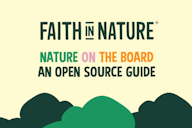
Nature on the board - an open source guide
This guide shares, in plain English, how Faith in Nature recognised the legal Rights of Nature within its organisational structures. Based in the UK, It sets out how they went about it and the changes made to their ‘Articles of Association’.
Nature on the board - an open source guide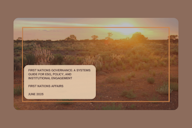
First Nations Governance, First Nations Affairs
This guide explains why genuine Indigenous governance requires real decision-making authority, not just consultation with suggestions for how to embed it. It makes clear the difference between tokenistic advisory roles and legitimate power-sharing structures that respect First Nations authority over Country and culture.
First Nations Governance, First Nations AffairsWant to browse more resources?
See all resourcesPitching your business
Whether you're seeking funding, partners, or customers, you need to be able to pitch your social enterprise with clarity and conviction. This section will provide tips and templates for creating a powerful pitch deck, delivering an engaging presentation, and handling questions from potential investors and supporters.
Resources
-19.png?w=192)
‘Pitching and fundraising’, Acumen Academy
The Acumen Academy offers free online courses and resources for social entrepreneurs. Their blog series on fundraising and pitching social enterprises provides valuable insights for changemakers seeking to refine their pitching skills and increase their chances of securing support and funding.
‘Pitching and fundraising’, Acumen Academy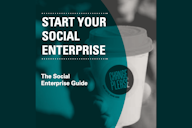
'Start Your Social Enterprise', Social Enterprise UK
While not specifically about pitching, this comprehensive guide serves as an excellent resource for preparing a social enterprise pitch. Use it as a valuable checklist and preparation tool, to help organise your thoughts and information in a way that resonates with investors, partners or supporters.
'Start Your Social Enterprise', Social Enterprise UK
'Your Guide to Making an Excellent Investor Pitch Deck', Vinay Kevadiya
This short blog focuses on developing a pitch deck for ventures seeking funding. It shares practical tips, a template to structure your pitch as well as common questions. Since it’s from a conventional business perspective you’ll need to consider where your impact proposition should be included.
'Your Guide to Making an Excellent Investor Pitch Deck', Vinay Kevadiya.png?w=192)
‘The Best Startup Investor Pitch Deck’, J. Skyler Fernandes
This is a useful guide and template for creating effective investor presentations. It combines crowd-sourced input from top industry experts and the author’s personal experience. It also shares examples, practical design tips and strategies for addressing investor concerns.
‘The Best Startup Investor Pitch Deck’, J. Skyler Fernandes
‘Lights, Camera, Action: How to Craft a Compelling Pitch Video’, Indiegogo
Crafting a compelling pitch video can provide you with an excellent (and multi-use) resource. This guide shares tips for creating standout videos, different story arc models and advice for working with production agencies.
‘Lights, Camera, Action: How to Craft a Compelling Pitch Video’, Indiegogo
‘Making Embassy with Tyson Yunkaporta’, Regeneration Rising, Season 2 Episode 11
Discover Tyson Yunkaporta’s concept of “making embassy,” which fosters respectful, reciprocal, and meaningful relationships between people, groups, and systems. Rooted in Indigenous cultural practices, it emphasises relationality, shared purpose, cultural respect, and adaptability. Explore how this dynamic approach creates spaces for dialogue, collaboration, and the intersection of diverse knowledge systems.
‘Making Embassy with Tyson Yunkaporta’, Regeneration Rising, Season 2 Episode 11Want to browse more resources?
See all resourcesBuilding and managing teams
As your social enterprise grows, you'll need to build and manage a team of passionate and skilled individuals. Here, you'll find resources on recruiting, onboarding, and developing your team members. We'll also cover topics like creating a positive workplace culture, managing volunteers, and fostering diversity and well-being in the workplace.
Resources
.png?w=192)
‘The future of management is teal’, Frederic Laloux
Frederic Laloux's article explores Teal organisations, a progressive management model emphasising self-management, wholeness, and purpose. It outlines organisational paradigms, highlights successful examples, and offers insights for social enterprises to balance purpose and effectiveness, even with partial adoption.
‘The future of management is teal’, Frederic Laloux.png?w=192)
‘Brave New Work’, Aaron Dignan
This video features Aaron Dignan, author of Brave New Work, sharing insights on transforming outdated work practices.
‘Brave New Work’, Aaron Dignan.png?w=192)
‘Managing volunteers’, Justice Connect
This Justice Connect guide outlines the key legal obligations organisations have towards volunteers. It provides practical examples, templates, and tips to help organisations navigate crucial areas, including the legal differences between volunteers, employees, and contractors; managing volunteer relationships; ensuring volunteer safety; addressing unlawful workplace behaviour; and handling intellectual property, privacy, and record-keeping issues.
‘Managing volunteers’, Justice Connect.png?w=192)
‘How To Have Challenging Conversations. Tips From Organisational Science’, Thinking About Teaching
This resource, adapted from the teaching profession, provides social enterprise leaders with strategies for navigating challenging management conversations. It highlights the ineffectiveness of "hard sell" or "soft sell" approaches in driving change and maintaining relationships. Instead, it introduces the "Open to Learning" framework, emphasising validity, respect, and commitment. Leaders are guided to approach conversations with shared decision-making and an open mindset, offering a practical tool for addressing performance issues and implementing change in dynamic work environments.
‘How To Have Challenging Conversations. Tips From Organisational Science’, Thinking About Teaching.png?w=192)
‘Diversity, Equity, & Inclusion in the Workplace: A Strategic and Actionable Guide’, Diversity Australia
This Diversity Australia resource provides practical guidance on integrating diversity, equity, and inclusion (DEI) into workplaces. It explores key concepts, outlines benefits like improved culture and business outcomes, and offers strategies for fostering inclusivity. Highlighting leadership's role and the need for ongoing training, it frames DEI as both a moral and strategic imperative, emphasising that building an inclusive workplace requires sustained commitment.
‘Diversity, Equity, & Inclusion in the Workplace: A Strategic and Actionable Guide’, Diversity Australia.png?w=192)
‘Relationships’, The Australian Indigenous Governance Institute (AIGI)
This resource from the Australian Indigenous Governance Institute (AIGI) examines the significance of relationships in First Nations governance. It covers cultural, community, and environmental connections, balancing roles, building trust, and fostering effective partnerships. The guide also explores allyship, network expansion, and practical strategies for creating balanced, respectful collaborations within Indigenous communities and beyond.
‘Relationships’, The Australian Indigenous Governance Institute (AIGI).png?w=192)
‘Managing the Managers: Nine Tips to Help Social Enterprises Build Outstanding Management Teams’, Next Billion
This NextBillion article provides nine essential strategies for building strong management teams in social enterprises. It highlights the importance of fostering a high-performing culture, implementing supportive systems, and prioritising continuous learning. Key approaches include effective talent assessment, incremental onboarding, meeting management, and coaching skill development. The article emphasises how strong management is vital for scaling operations and achieving meaningful impact.
‘Managing the Managers: Nine Tips to Help Social Enterprises Build Outstanding Management Teams’, Next Billion
'Leadership in Social Enterprise: How to Manage Yourself and the Team', Schwab Foundation for Social Entrepreneurship
This report by the Schwab Foundation for Social Entrepreneurship supports social enterprise leaders in tackling unique challenges like balancing social impact with commercial goals, managing diverse teams, and meeting stakeholder expectations. Grounded in global insights from interviews, case studies, and surveys, and developed with input from experienced social entrepreneurs, it offers practical, stage-specific guidance. Designed as a collaborative tool, it fosters knowledge sharing and equips leaders with strategies to drive mission-driven organisations effectively.
'Leadership in Social Enterprise: How to Manage Yourself and the Team', Schwab Foundation for Social EntrepreneurshipWant to browse more resources?
See all resourcesGetting to market
To achieve your impact goals, you need to get your products or services into the hands of your target customers. In this section, you'll learn about market research, empathy mapping, brand building, the marketing and sales cycle, social procurement, and payments for outcomes. Many of the resources explore the unique market challenges and opportunities for social enterprises.
Resources
.png?w=192)
A Beginner’s Friendly Guide On How To Conduct Market Research, Sloovi
This concise resource provides a comprehensive guide on how to conduct market research, aimed at beginners. It explains the importance of market research, outlines different types and methods, and offers a step-by-step process for conducting research.
A Beginner’s Friendly Guide On How To Conduct Market Research, Sloovi.png?w=192)
'Go-to Market Strategies', Harvard Innovation Labs
This is a long-form video lecture from Harvard Innovation Labs for conventional start-ups and business, but it provides a comprehensive framework for thinking about and planning 'go-to' market strategies.
'Go-to Market Strategies', Harvard Innovation Labs.png?w=192)
A Guide to Empathy Mapping, Atlassian Team Playbook
This resource provides a guide to conducting an Empathy Mapping exercise, a technique used by teams to better understand their customers' needs and experiences. It outlines a step-by-step process for creating empathy maps, including preparation, running the session, and determining actionable insights from the exercise. The guide emphasises the importance of basing the empathy map on real customer data rather than assumptions, and suggests ways to use the resulting insights to improve products or services.
A Guide to Empathy Mapping, Atlassian Team Playbook.png?w=192)
Social Procurement Fundamentals for Social Enterprises, Social Traders
This video tutorial covers what social procurement is, key drivers, how the Social Traders marketplace works, and what you need for your social enterprise to be ready for social procurement.
Social Procurement Fundamentals for Social Enterprises, Social Traders.png?w=192)
'Outcomes Funds: Explained', Centre for Social Impact
This guide by CSI explains what an outcomes fund is - a financing mechanism that pools funding to support organisations addressing social issues, with payments tied to achieving specific measurable outcomes. This guide by CSI shares more detail on what and who are usually involved in setting up and managing an outcomes fund.
'Outcomes Funds: Explained', Centre for Social Impact.png?w=192)
Branding Frameworks - the Brand Pyramid and Keller's Brand Equity Model, Mindtools
The Brand Pyramid and Keller's Brand Equity Model are complementary frameworks for understanding and building strong brands. The Brand Pyramid illustrates five stages customers go through in developing brand loyalty: Presence, Relevance, Performance, Advantage, and Bonding. Keller's model, depicted as a four-level pyramid, focuses on how companies can build brand equity: Brand Identity, Brand Meaning, Brand Response, and Brand Relationships. Both models emphasise the importance of understanding customer perceptions and emotions, and creating positive brand experiences.
Branding Frameworks - the Brand Pyramid and Keller's Brand Equity Model, MindtoolsWant to browse more resources?
See all resourcesCommunications, stakeholder engagement & storytelling
Effective communication is key to building support for your social enterprise. In this section, you'll learn how to engage with stakeholders and develop a communications strategy. We also explore the power of storytelling. Compelling stories have the power to inspire, engage, and mobilise support for social enterprises. Here, we examine the key elements of effective impact storytelling and explore tools and platforms for crafting and sharing compelling narratives.
Resources

‘The basics of customer journey mapping’, Smaply
Discover the basics of customer journey mapping—an end-to-end visualisation of your customers' experience. This article explains how journey mapping helps you understand customer needs, improve design processes, and boost satisfaction and loyalty. Learn its benefits, how to create a map, and use insights for better customer experiences.
‘The basics of customer journey mapping’, Smaply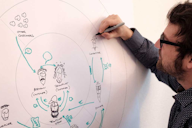
‘The basics of stakeholder mapping’, Smaply
A stakeholder map captures the ecosystem surrounding a product or service from a specific perspective. This article explores what stakeholders are, the importance of stakeholder mapping, and the steps to create an effective map. It includes downloadable templates, a walkthrough video, and guidance on prioritising stakeholders, illustrating relationships, and analysing value exchanges.
‘The basics of stakeholder mapping’, Smaply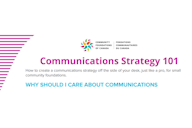
'Communications Strategy 101', Communities Foundations of Canada
Learn how to create an effective communications strategy with this practical fact sheet for community organisations. Covering key topics such as audience identification, crafting messages, platform selection, and evaluation, it provides a step-by-step guide with exercises and tips to help community foundations implement and refine their communications efforts.
'Communications Strategy 101', Communities Foundations of Canada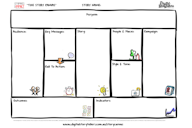
'Story Canvas', Digital Storytellers
Discover the Story Canvas—a practical tool to craft impactful, strategic stories tailored to your needs. Designed by Digital Storytellers, this downloadable canvas simplifies storytelling for nonprofits, social enterprises, and impact organisations. With step-by-step guidance and resources, it helps you create engaging stories that inspire action and advance your cause effectively.
'Story Canvas', Digital Storytellers, Our Rac-1.png?w=192)
'Transformational Ethical Storytelling (T.E.S.T.)', Our Race
Discover T.E.S.T., an anti-oppressive framework for ethical storytelling that prioritises the rights and needs of all individuals. T.E.S.T. empowers Story Holders to control their narratives while providing Story Caretakers with principles to ensure safe, ethical storytelling. Explore related resources, including guides and an ethical storytelling video, to deepen your understanding.
'Transformational Ethical Storytelling (T.E.S.T.)', Our Race
'Stories to save the world', Futerra
This resource explores the power of storytelling in addressing climate change - its underlying ideas can be applied to other areas of impact. It argues that while the science and technology for combating climate change exist, what's missing is the right story to motivate action.
'Stories to save the world', Futerra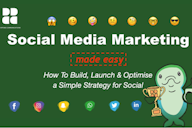
Social media marketing made easy - video lesson and planner
This 40 minute video uses real life examples to share how to build, launch and optimise a simple social media strategy. It is a pragmatic guide for small organisations with limited resources and time-poor people wearing multiple hats.
Social media marketing made easy - video lesson and planner.png?w=192)
Social media templates, Hootsuite
It’s difficult to keep up with the latest trends in social media. Hootsuite regularly updates its advice and offers many free tools for planning and posting on social media. This page pulls together 35 different templates and while they won’t all be relevant to you there are some useful ones in there.
Social media templates, HootsuiteWant to browse more resources?
See all resourcesComing soon
Understorey points to a range of quality resources that already exist across the sector: practical guides, tools, reports, case studies, and proven frameworks. We’re bringing them together in one place to make it easier for everyone to learn and exchange about social enterprise.
Do you know of a great resource we should include?
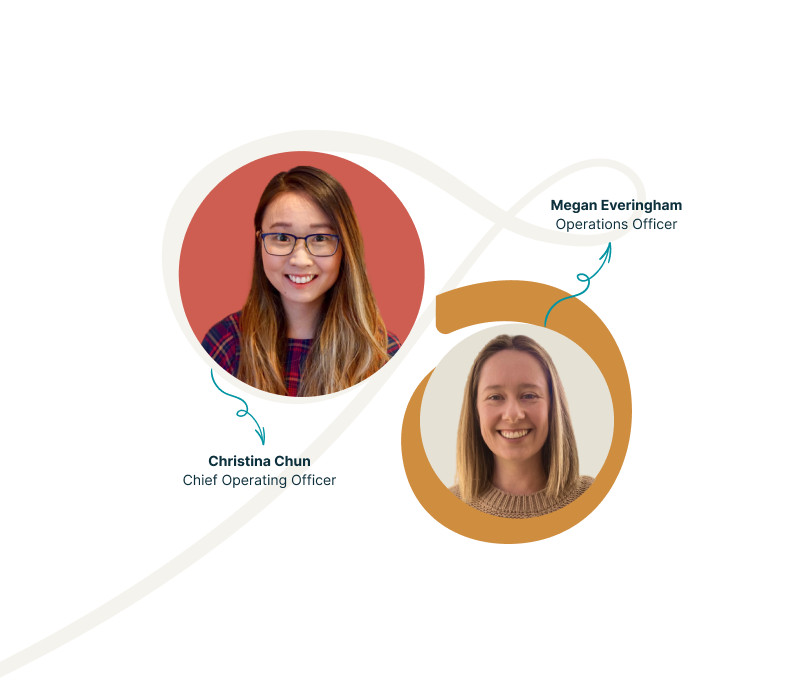
We’d love to hear from you!
Reach out to one of our team members, and share input and ideas about how we can evolve Understorey.
Get in touch